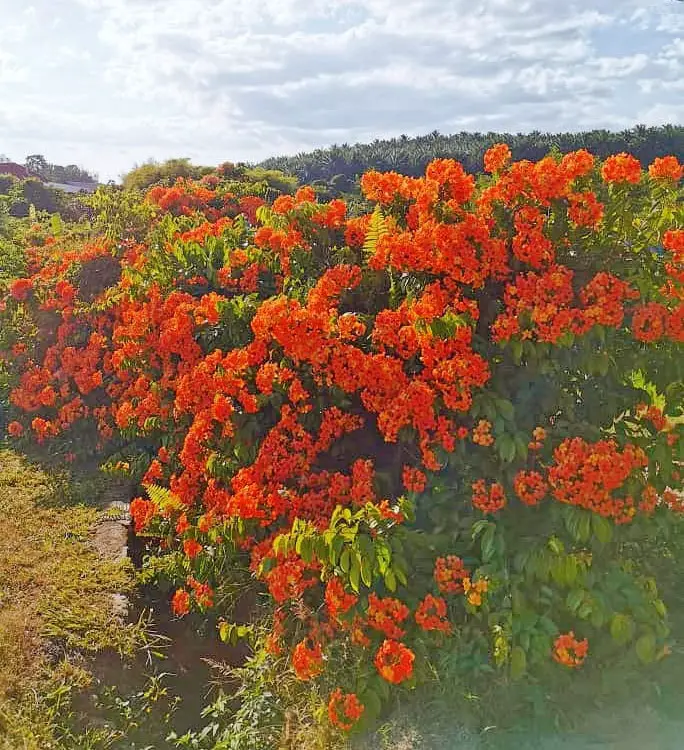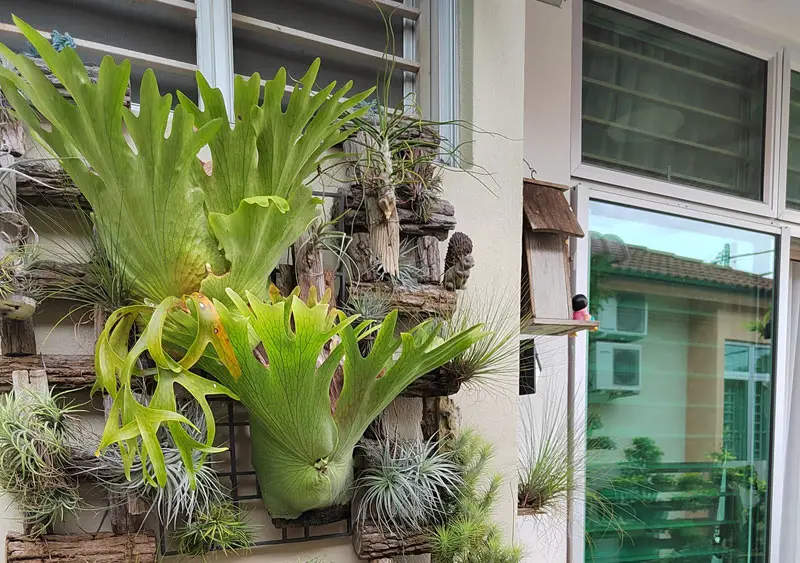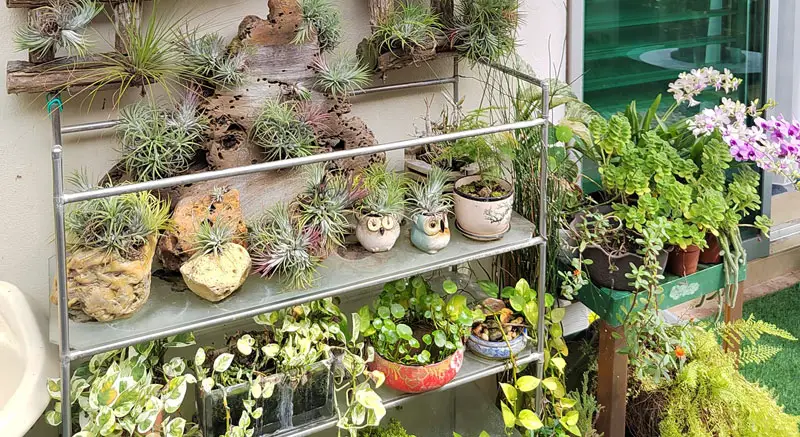Plant parenthood can be a fulfilling and rewarding experience. Whether it’s tending to plants in the wild or caring for houseplants at home, there are many benefits to having greenery around us. But what’s the difference between taking care of plants in the wild versus houseplants?
In the wild, 99.999% of plants die. On our brief treks through the wild, we see only those few plants that cut to be there for that brief moment when we are.
We see the exceedingly rare individuals that were lucky enough to sprout ideally placed and timed to have the resources they needed to outcompete others and that were unusually lucky and strong enough to survive the stresses of UV radiation, whipping winds, mercurial rains, vacillating temperatures, foraging animals, insect plagues, and an endless barrage of fungal, bacterial, and viral diseases.
Also, the vast majority of those lucky plants that we see there in the wild too will be short-lived themselves. The next time we pass through, it may seem to be the same, but it is an almost entirely new cast of characters. It is only through ignorance, through not paying close enough attention to see the individuals in the throng, that we can believe the lie that they are enduring.
The truth is that Mother Nature is uncaring, cruel, and merciless. Mother Nature kills just as many, if not more, of the plants in her House as we kill in ours. Mother Nature continually tests and culls, she does not nurture and preserve. The latter is a distinctly human preoccupation.
Plants in the wild are connected to an entire ecosystem that supports them. Also, the flowers that you see in the wild are the ones that survived, you do not see the ones that did not survive nature.
Differences In Location
The wild is a vast, untamed domain. It’s a place where nature reigns supreme and every living organism must fight for its survival. Plants in the wild are hardy warriors that have adapted to their environment over many generations. Houseplants, on the other hand, live far away from danger – they inhabit our homes and gardens which provide them with safety and warmth.
Houseplants will never experience the excitement of being buffeted by strong winds or drenched in heavy rain; instead, they’ll be pampered with regular watering sessions and occasional pruning activities. The plants in the wild don’t get such luxuries as these – instead, they must rely upon Mother Nature to decide whether it lives or dies.
Humans can create environments inside our homes that mimic those found outside but there’s no substitute for an authentic natural habitat. Plants grown indoors aren’t subjected to the same elements experienced by those growing outdoors: extreme temperatures, invasive species, harsh climates, etc. This certainly makes life easier for houseplant owners but also means that indoor-grown specimens lack some of the characteristics found amongst their wild counterparts.
Differences In Climate And Sunlight Exposure
Plants in the wild and houseplants differ greatly when it comes to climate and sunlight exposure. In the wild, plants are exposed to a variety of climates, ranging from hot and dry deserts to cold and snowy mountain tops. They must also adjust their photosynthesis processes accordingly so they can survive the changing conditions.
In contrast, houseplants have much more consistent light levels due to being indoors. This makes them easier to care for since they don’t have to deal with constantly shifting temperatures or intense sunburns during the summer months. Here’s an overview of some key differences between these two types of plants:
- Wild plants must adapt quickly to changes in weather, whereas houseplants receive relatively stable indoor lighting all year round.
- Wild plants may not get as much direct sunlight as those grown outdoors, while many houseplants rely solely on artificial lights for sustenance.
- Wild plants need protection from extreme weather like hail storms or drought conditions that might irreversibly damage them; however, most houseplants do not require such extreme shielding from environmental factors.
Houseplant owners also have control over how much water and fertilizer get added into their mix which allows them greater flexibility in caring for their plant compared to someone growing a plant out in nature who has less control over its environment. Soil type and nutrient availability is yet another area where wild vs houseplant cultivation has different needs – but we’ll delve into that later!
Differences In Soil Type And Nutrient Availability
Plants in their natural habitat have an enormous advantage over houseplants due to the diversity of soil types and abundance of available nutrients. This is because plants in their natural habitat can obtain all the nutrients they need without any outside help. Natural processes, such as the decomposition of organic matter and the erosion of rocks, have increased the mineral content of the soil they inhabit. On the other hand, we are the sole source of sustenance for our indoor plants. To ensure they have access to all the nutrients they require, we must add fertilizer or compost to the soil.
Another key difference between these two types of plants lies in their root systems. Plants that grow in nature typically have an extensive root system which helps them access vital nutrients and moisture deep underground. Houseplants? Not so much! Their roots tend to remain shallow since they’re confined within a pot – meaning they can only absorb what’s available right at the surface level.
The lesson here: if you want your beloved indoor greenery to stay healthy and vibrant, don’t skimp on those fertilizers! But if you’re looking for maximum growth potential, nothing beats growing out in nature’s backyard.
Differences In Water Requirements
Watering requirements for plants in the wild versus houseplants are vastly different. Wild plants have adapted to rely on natural precipitation and other sources of water that naturally occur in their environment, such as soil moisture, fog, or dew. Houseplants require regular irrigation from an owner’s watering can, hose, or sprinkler system if they’re going to stay healthy and vibrant. And it doesn’t stop there—the amount of water needed by a particular plant varies greatly depending on its type and size.
For instance, cacti thrive best when watered sparingly while ferns need frequent mistings with distilled water to keep them looking lush and green. Some succulents prefer barely any water at all while others enjoy more frequent dousing provided by their attentive caretaker! Keeping up with these complex needs requires research into individual species so you don’t end up underwatering your prized petunia or drowning your beloved dracaena marginata.
It’s important to note that both indoor and outdoor plants should be allowed to dry out between waterings since soggy roots can quickly cause a plant’s death. Understanding how much moisture each kind of plant needs is essential for proper maintenance; otherwise, you may find yourself dealing with wilting leaves and drooping stems instead of thriving foliage.
Natural Predators And Pests
A wild is a dangerous place, and plants often face their own set of threats. Predators lurk in dark corners waiting to snatch up unsuspecting leaves and flowers. These predators include birds, mammals, insects, as well as other plant-eating species that play natural roles in the environment. Houseplants on the other hand are safe from these types of dangers—or so it would seem! In reality, houseplants can still be affected by pests such as aphids, mealybugs, mites, or fungus gnats that seek to feed on the juicy leaves or stems of your beloved flora. The only way to protect them is with vigilance and regular maintenance.
Though both wild plants and houseplants have their unique struggles when it comes to defending themselves against predators and pests, one thing remains clear: there’s no rest for the weary gardener! But thankfully we humans have access to an array of tools like insecticides and fungicides that help keep our leafy friends healthy – something that nature alone cannot provide us.
Wind Can Be An Issue
I told my friend about my houseplant that was dead after growing 3 inches long, she told me something that I need to observe.
Plants that are planted inside, tend to get no wind. Without wind, a plant is struggling because it never had to be strong to keep the wind from ruining it. That is why in the summer putting your plants outside helps them stay alive because they grow strong In the wind.
It is the very reason why when they tried to grow orchards in the greenhouse all the trees died because they didn’t build strong roots to keep them upright. There is an entire research project about plants and natural wind and how it’s integral for plants long term.
The plant grass is not a top-heavy plant though, so yeah a fan would keep the grass healthy. But other plants do need outdoor wind. Like anything bigger, the half-foot tall needs wind the build big enough roots to hold the heavy top upright. Otherwise, it starts to lean and get weak. then people have to support them with poles so they can stay upright. When all they needed was treatments of strong wind.
My friend constantly props up her outdoor plants with sticks. They grow strong roots eventually though, as do her indoor plants. They need sunlight, and time, but for sure wind does make them stronger, but natural sunlight and water are far more critical. A fan does work, trees grow strong here and there’s barely any wind ever, a light breeze maybe.
Benefits Of Wild Plants
Now that we’ve covered the dangers posed by wild animals and insects, let’s examine the positive aspects of untamed vegetation. Many animals rely on the food and shelter that wild plants provide, and these plants have many advantages over houseplants.
Furthermore, there is a huge variety of wild plants that can be used for food or medicine. This is due to the fact that wild varieties typically have higher nutrient content than their tamer counterparts. In addition to being less delicate than typical houseplants, these plants can survive with less human involvement.
Wild plants also contribute to ecological stability by providing shelter for animals and insects. They are great additions to any garden or outdoor space because they regulate air quality by absorbing pollutants from the atmosphere. So, if you want to give your yard a unique look, why not incorporate some untamed plants?
Benefits Of Houseplants
Houseplants can be a great addition to your home. They add beauty, life, and color to any space. Plus, they have some impressive health benefits too! Studies have shown that having houseplants in the home can reduce stress levels, increase oxygen and decrease carbon dioxide levels, making it easier to breathe. Houseplants are also known to boost your concentration level and creativity while decreasing fatigue and anxiety.
Nonetheless, they have an appealing appearance. Every room in your house can benefit from the addition of ornamental plants including succulents, ferns, ivy, and orchids. Natural air purification can be accomplished by a number of different species. Those in the family who suffer from asthma or allergies will benefit from having these houseplants.
Whether you want to add some visual interest to your home or simply want to increase the air quality, houseplants can help. You can find something that suits your taste and your budget thanks to the wide variety of options available today.
Care Instructions For Wild Plants
Caring for wild plants is a rewarding experience that allows you to observe the natural world up close. There are, however, certain steps one must take in order to ensure their safety and well-being when caring for them:
* Safety:
- Wear gloves while handling wild plants to protect yourself from potentially poisonous thorns or sap.
- Use insect repellent spray if necessary.
- Avoid trampling or pulling too hard on any vegetation as it can damage fragile root systems.
*Location:
- Place the plant in an area with adequate sunlight and water drainage where possible.
- If planting indoors, place them near a sunny window or use grow lights.
*Give them plenty of room to spread out – overcrowding can reduce air circulation which leads to fungal diseases.
* Make sure the soil has good drainage so the roots don’t become waterlogged and rot away.
*Add mulch around your plants to help retain moisture and discourage weeds from growing nearby.
*Ensure that animals have limited access to avoid them eating or uprooting your new addition!
Remember that wild plants may require more care than houseplants owing to fluctuations in temperature, humidity levels, etc., so be ready to prune, fertilize, and water as necessary all year long. These stunning creatures will flourish under your watchful eye, providing you with years of pleasure.
Care Instructions For Houseplants
From caring for wild plants to houseplants, the care instructions take a significant turn. While wild plants are mostly left alone in their natural environment, houseplants require more attention and effort from their caregivers. A great example of this is illustrated by one plant enthusiast who had an orchid that was thriving in her home until she accidentally overwatered it! To ensure you don’t make the same mistake, here are some essential tips on how to properly care for your precious houseplants.
First and foremost, when it comes to watering, keep in mind that different types of houseplants need varying amounts of water. Some species like succulents can survive with minimal hydration while others such as ferns will benefit from regular misting sessions. And if possible, try using filtered water instead of tap water which could contain harmful chemicals like chlorine.
Soil selection plays a major role in determining how healthy your plants will be; always opt for high-quality potting mixes that have adequate drainage properties so excess moisture can easily escape without causing root rot or other issues.
It’s also important to provide your houseplants with plenty of light – even those varieties labeled as shade lovers still need at least several hours of direct sunlight each day for photosynthesis and growth! If necessary, supplement with artificial lighting sources like LED bulbs but remember not to overdo it since too much exposure may burn delicate leaves.
Different Types Of Fertilizers Used By Wild Plants
It’s common knowledge that wild plants are tough, enduring, and require little care. With regard to fertilizers, they should not pay any extra attention. They make do with what they can find, including: * nutrients from the soil * rainwater containing traces of minerals * decomposing leaves, and other organic material
Yet, indoor plants need specialized fertilizers in order to thrive. Many gardeners choose to use slow-release fertilizers because of the progressive release of nutrients into the soil over time. But, liquid fertilizers require more frequent applications (once per week or two) before you’ll see any visible growth. Specialized fertilizers, such as those developed for cacti and succulents, can also be used to supplement nutrient needs.
The ability to control the food of houseplants is what distinguishes them from their wild counterparts. Because they lack access to natural resources, houseplants must rely on humans for sustenance.
Different Types Of Fertilizers Used By Houseplants
Fertilizers made specifically for houseplants are a common method of providing the nutrients they require. There is a large selection of these goods on the market, so it’s important to choose the one that’s best suited to the plant you’re growing. Keeping houseplants healthy and flourishing requires knowledge of the many fertilizers available.
Natural materials, such as manure or decomposed vegetable waste, are typically the starting point for organic fertilizers. They will help plants thrive by gradually releasing nutrients over time. Water-soluble fertilizer mixes are readily accessible for individuals who prefer synthetic solutions and may swiftly add vital minerals and nutrients to your soil mix. If taken as directed and in the recommended quantity, they should be able to supply the required nutrients.
Liquid foliar sprays are another popular option amongst houseplant owners seeking quick results. This method delivers direct contact with certain vital micronutrients directly onto leaves rather than having it absorbed through roots alone; this allows faster absorption by plants and also helps guard against nutrient deficiencies caused by poor root health or imbalanced soils.
Conclusion
In conclusion, wild plants and houseplants are very different from one another. There is no comparison between the two in terms of their environment, temperature, soil, water needs, predators and pests, or maintenance requirements. To make sure your plants do well in their habitats, you need to be aware of the subtle differences between them.
The selection of a plant species or variation for wild plant care must take into account the local environment and the presence of natural predators. Furthermore, fertilizers should be adjusted according to the specific requirements of the crop. While outside plants have more lenient requirements, indoor plants nonetheless have distinct needs. Maintaining their health also requires consistent doses of fertilizer.
In sum, both wild and houseplants bring life and beauty into our lives; however, they must be cared for differently if you want them to survive long-term. With proper knowledge and diligent effort on your part, these luscious greens will surely enrich your living spaces with style and grace!




